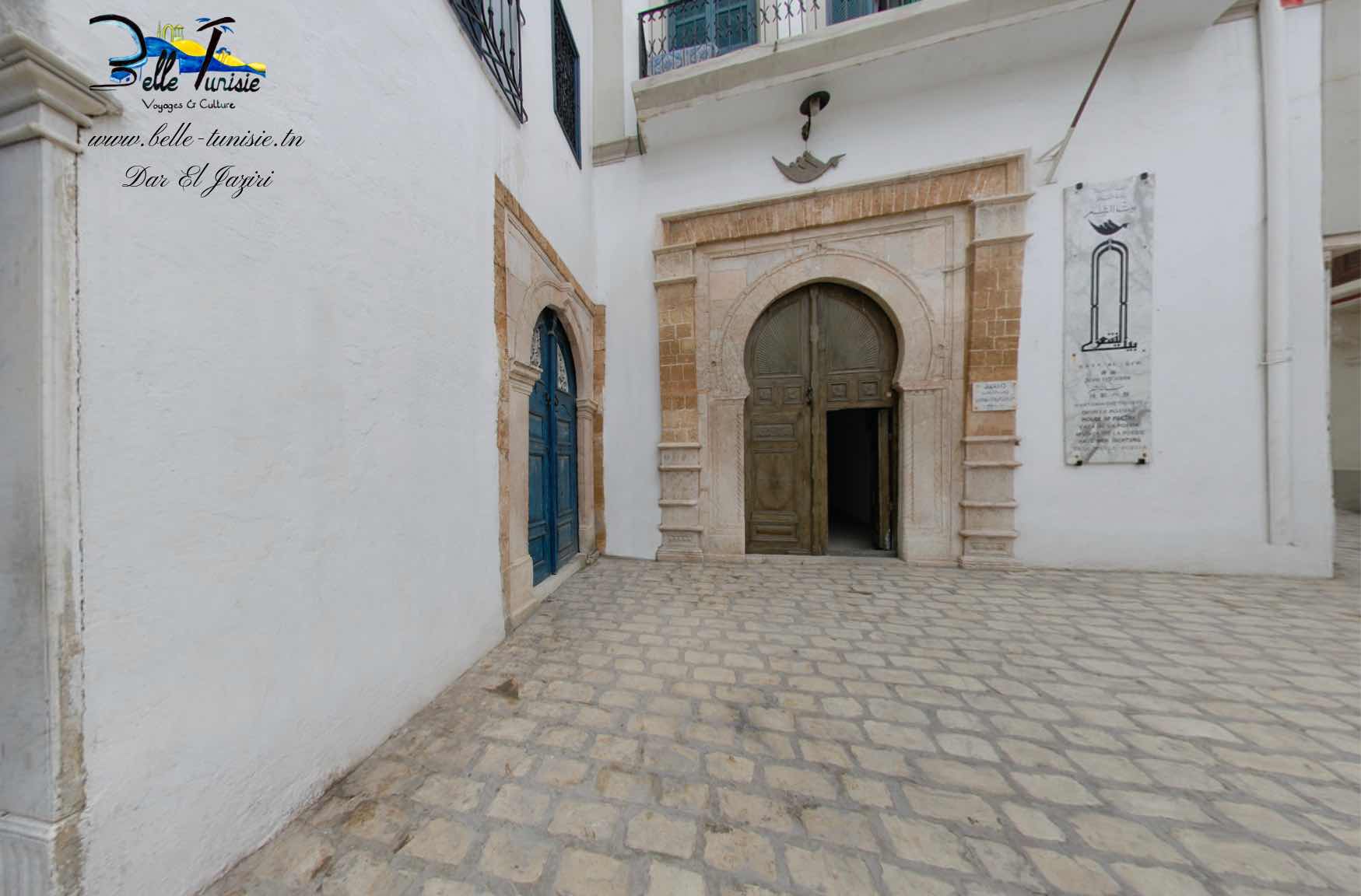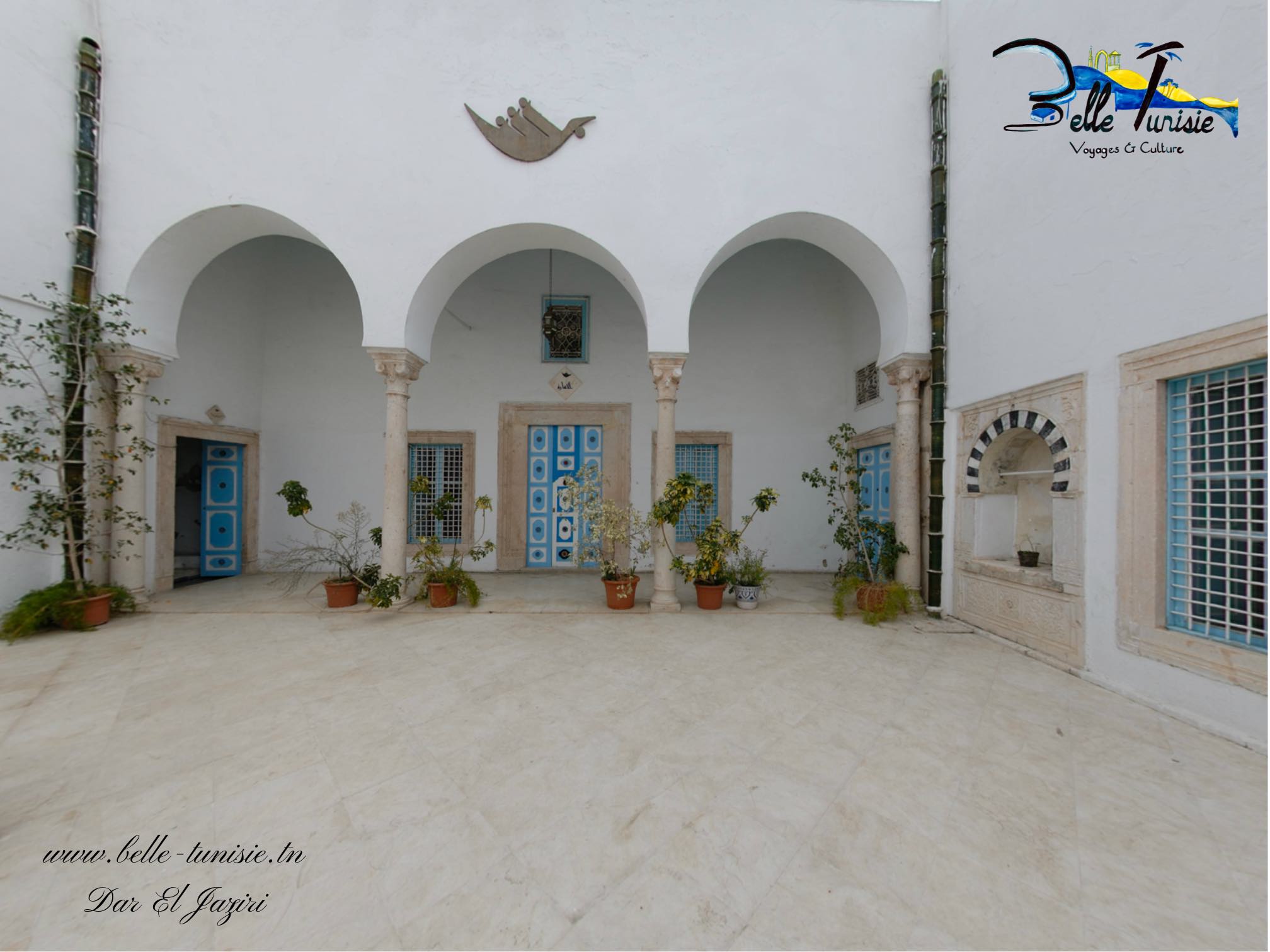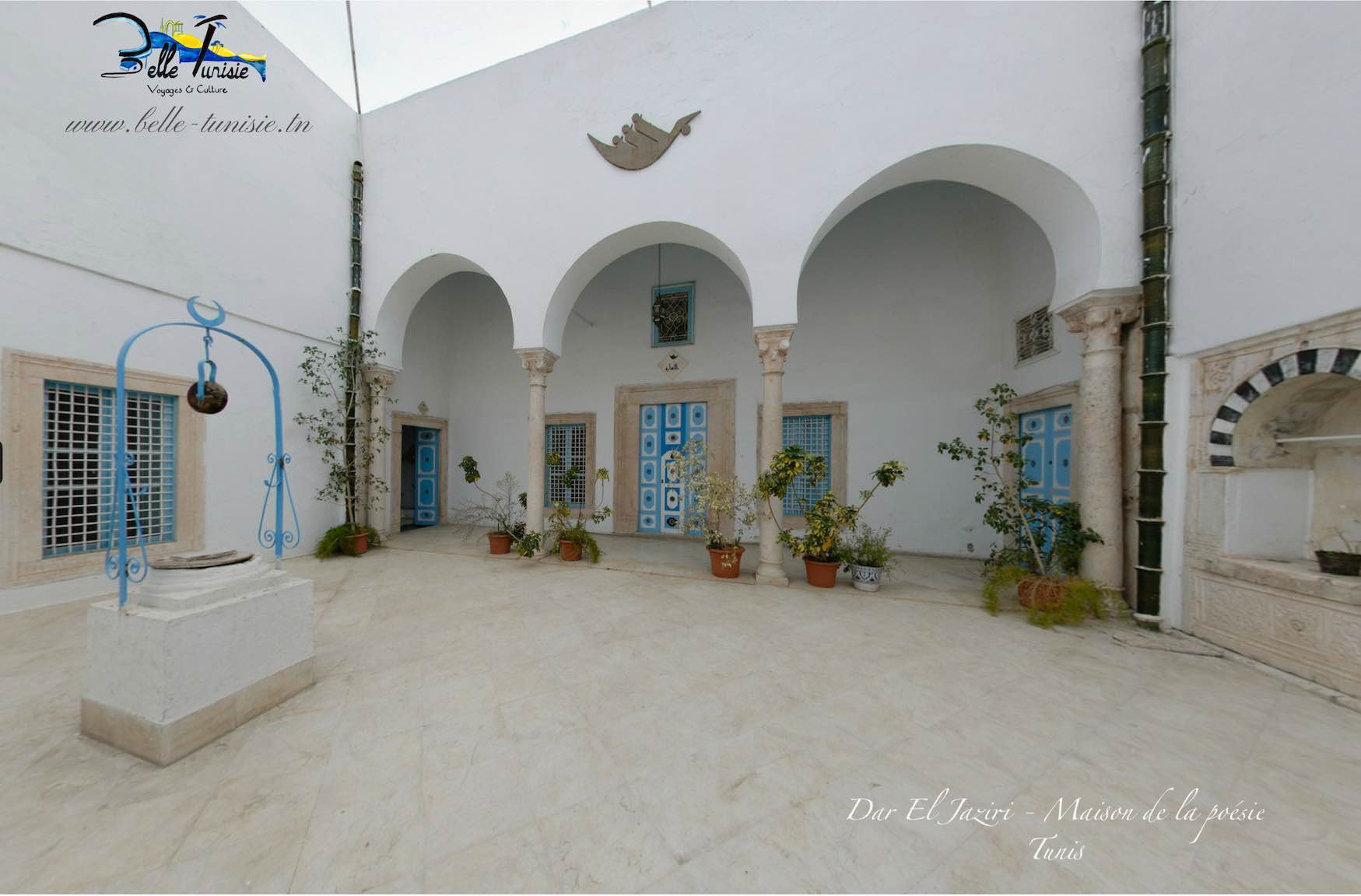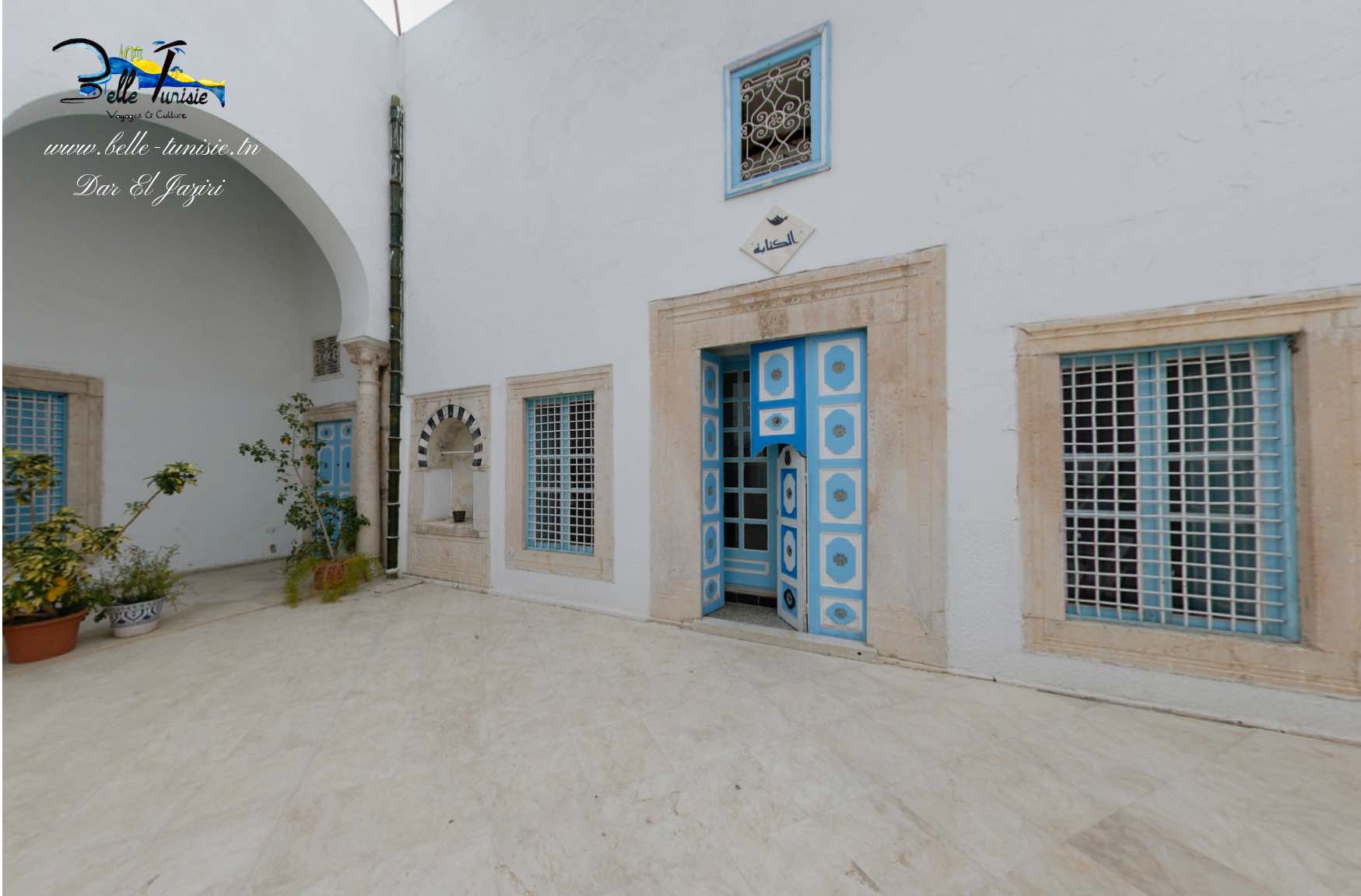Dar el Jaziri – Maison de la Poésie
دار الجزيري
(English version below)
Dar el Jaziri est un palais de la Médina de Tunis construit au XVIIIème siècle par une riche famille de propriétaires terriens.

Il est célèbre pour avoir abrité le deuxième congrès du Neo-Destour (30 octobre-2 novembre 1937). Ces réunions, alors clandestines, se tenaient dans les grandes cours des demeures, à l’insu des autorités coloniales. C’est à ce titre que le Dar el Jaziri a été acquis par l’Etat et est devenu monument historique. Il est aujourd’hui dédié à la poésie. Les rencontres des poètes, les joutes poétiques et la bibliothèque spécialisée font du dar un haut lieu de la culture.

La cour, à deux portiques opposés, a gagné en sobriété en perdant les faïences murales. Sa sobriété est accentuée par l’usage exclusif du « kadhal » (pierre calcaire) que l’on retrouve en pavage, formant les colonnes et les chapiteaux, l’encadrement des portes et des fenêtres, la margelle du puits, la niche de la citerne.
Pour alimenter la citerne souterraine en eau de pluie à partir des terrasses, quatre « mizab » (conduites verticales en poterie vernissée verte) descendent le long des quatre angles de la cour et plongent dans les réservoirs souterrains.
La symétrie parfaite des portes et fenêtres et leurs boiseries peintes de douces tonalités de bleu procurent à cette cour si lumineuse une ambiance apaisante.

Dans les pièces qui ont perdu leurs revêtements muraux ainsi qu’une grande partie de leur frise de stuc, le regard n’est plus retenu que par la beauté des plafonds en bois peint. Les solives apparentes s’ornent de motifs floraux italianisants encadrant des éléments géométriques hispano-mauresques.

Plus élaborée est la composition décorative du plafond à caisson du « kbou ». Il comprend, au centre, un motif rectangulaire, encadré de plates-bandes ; l’ensemble est parsemé de fleurs. Les enluminures des plafonds se poursuivent dans les ciels de lit des alcôves latérales. Ces éléments de mobilier fixes sont conçus et exécutés au niveau de la construction même des pièces d’où leur harmonie totale avec les plafonds.
29, rue du Tribunal - Tunis
(Source:http://www.medinatunis.com/index.php/fr/palais-et-grandes-demeures/dar-el-jaziri)
English version
Dar el Jaziri - House of Poetry Dar el Jaziri was built in the 18th century by a wealthy family of landowners.
It is famous for having hosted the second congress of Neo-Destour (October 30-November 2, 1937). These meetings, then clandestine, were held in the large courtyards of the houses, without the knowledge of the colonial authorities. It is in this capacity that the Dar el Jaziri was acquired by the State and became a historical monument. Today it is dedicated to poetry. The meetings of the poets, the poetic games and the specialized library make the dar a high place of culture.
The courtyard, with two opposite porticos, has gained in sobriety by losing the wall tiles. Its sobriety is accentuated by the exclusive use of "kadhal" (limestone) which can be found in the paving, forming the columns and capitals, the frame of the doors and windows, the coping of the well, the niche of the tank. To supply the underground cistern with rainwater from the terraces, four “mizab” (vertical pipes in green glazed pottery) descend along the four corners of the courtyard and plunge into the underground reservoirs. The perfect symmetry of the doors and windows and their woodwork painted in soft tones of blue give this bright courtyard a soothing atmosphere.
In rooms that have lost their wall coverings and much of their stucco frieze, the eye is only caught by the beauty of the painted wooden ceilings. The exposed joists are adorned with Italianate floral motifs framing Hispano-Moorish geometric elements. More elaborate is the decorative composition of the coffered ceiling of the “kbou”.
It includes, in the center, a rectangular motif, framed by flower beds; the whole is strewn with flowers. The illuminations of the ceilings continue in the bed skies of the side alcoves. These fixed furniture elements are designed and executed at the level of the very construction of the rooms, hence their total harmony with the ceilings. 29, rue du Tribunal - Tunis (Source: http: //www.medinatunis.com/index.php/fr/palais-et-grandes-demeures/dar-el-jaziri)



